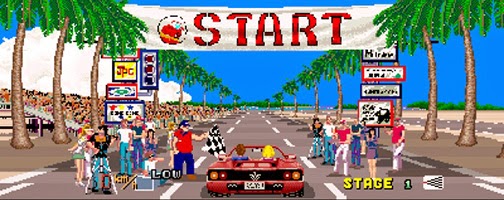Wrestling is a strange beast – most people simply don’t
understand the appeal; for the rest of the world it provides an entertaining
spectacle that simply cannot be matched by your average episode of East Enders
or Coronation Street. Imagine how much more entertaining an episode of the
popular cockney soap would be if in one episode Phil Mitchell and Dot Cotton
started hitting each other with steel chairs before both were power-bombed
through a table by an angry Alfie Moon – now that’s entertainment!
Smackdown! Here Comes the Pain is the fifth instalment in
the (at the time), generally excellent Smackdown series and was where, instead
of resting on its laurels, THQ have tried to develop the franchise through a
number of changes to the core gameplay. A very brave move, considering
Smackdown! already contained possibly the most flexible fighting system
available in a wrestling title(aside from Fire Pro and No Mercy of Course),
–this, along with a few new additions, means the revision bears less
resemblance to its predecessors than many were expecting.
The first thing that grabs you upon booting the game is how
much the graphics have improved. Characters are far more detailed than before
and feel a lot more solid when moving and fighting. This is a good thing,
although we feel this may have contributed to issues regarding the roster and
some of the superstars’ entrance music at the time.
However, THQ were always onto a loser in terms of inclusions
this time round, because this is where the two brands of Smackdown! and
RAW split; meaning the roster is divided
straight down the middle. This leads to ‘sub-par’ superstars being involved in
minor storylines and, despite a roster of over fifty-five wrestlers, there are
still a number of glaring omissions for the time such as then, women’s champion
Molly Holly; ex-tag champions La Resistance; and the world’s strongest man Mark
Henry, to name a few.
Problems also exist with music on the superstars’ entrances
with some of it being very date and particularly suffering through loss of
lyrical content – leading us to believe that corners were cut during
development. Perhaps it would be
unfair to lay these problems squarely at THQ’s feet, because it relates
moreover to limitations placed upon the ageing PS2 hardware, which it must be
said, delivers to the best of its abilities – once you have explored what is
actually in the game.
Spurious and cosmetic concerns aside, almost everything that
matters in the game has been improved; the grapple system has been updated and
though it feels strange at first, soon proves more flexible than before –
allowing players to have a greater idea of what sort of move they are going to
pull off in the heat of battle. A further improvement is evident in the way
superstars’ attributes are applied as now there is a huge difference between a
lumbering big man and a nimble small man, and if a weaker character tries to
lift a heavyweight it will physically be prevented – likely injuring their
backs and ending in (animated) pain. A nice touch.
Other noticeable improvements with the physics engine see
players prone to taking damage upon specific areas of the body. This helps with
both submission-holds and also limits the movement range of your opponent.
Injure someone’s head badly enough and a well-placed blow will see the
superstar bleed – not massively, but enough to inspire organic belief that
realism is flowing through the title’s gaming marrow. Additionally, we are
delighted with the improvements made to the submission system; instead of
characters just performing a move for mere seconds, now depending on your
submission-rating the move can be held for long periods of time (and by hitting
any button). Likewise, your opponent can try and escape the hold by doing the
same – a small touch, but one that makes a huge difference to the feel of
matches.
After listening to fans’ grievances from previous titles, a
number of bona fide legends have also been included in this version of
Smackdown! Admittedly, you can’t please everyone, because over the years there
have been thousands of WWE superstars, but it’s fair to say that most would be
pleased with the inclusions; Superfly Jimmy Snukka, The Legion of Doom and
Roddy Piper (along with others) deserve their place, but we raised an eyebrow
at the inclusion of Hillbilly Jim, and a couple of others.
Speaking of irregularities – Hulk Hogan was with the WWE
when the game went into development and appears in early promotional shots of
the title, yet when Hogan left he was removed from the title. Honestly, Hulk
Hogan is possibly the most popular wrestler of all time, surely he could have
been included as an unlockable legend?
Notwithstanding, Smackdown! Here Comes the Pain features
just about everything you could want from a wrestling title (presentational
issues aside). New match types such as the elimination chamber, and a revised
control system, mean that unlike other WWE titles appearing on other formats,
this one can stand up in its own right as an accomplished game – and one that
people outside of its hardcore fanbase should have some fun with. Technological
barriers prevent Smackdown! from reaching its full potential, but nonetheless
this is a great release that would even appeal to those who own the last
instalment in the series. It’s probably the peak of the series as the games
only seemed to get worse after this.
Overall 8/10

















